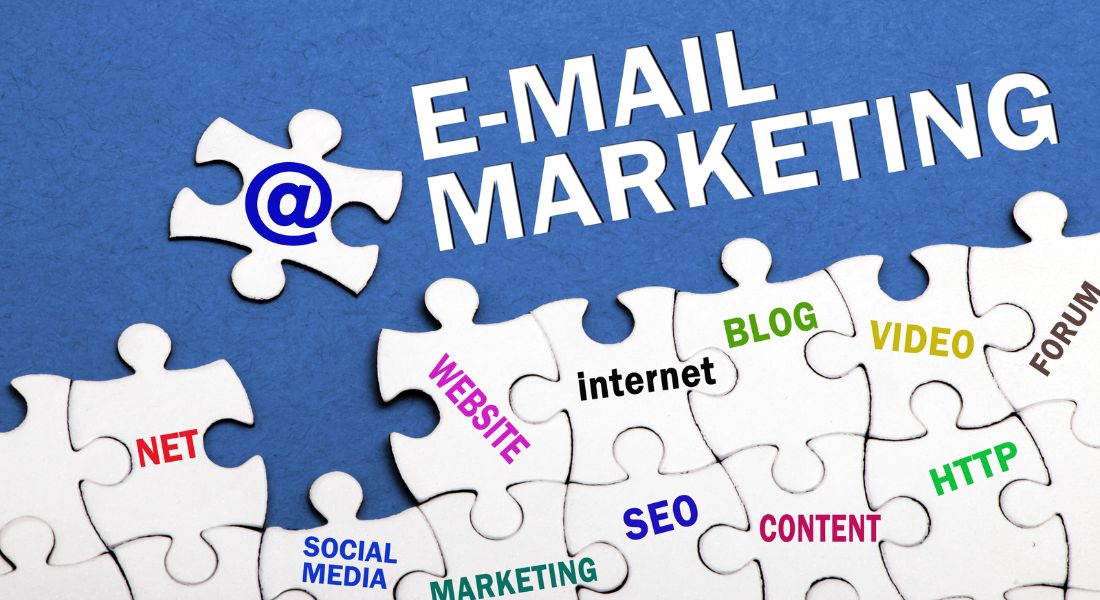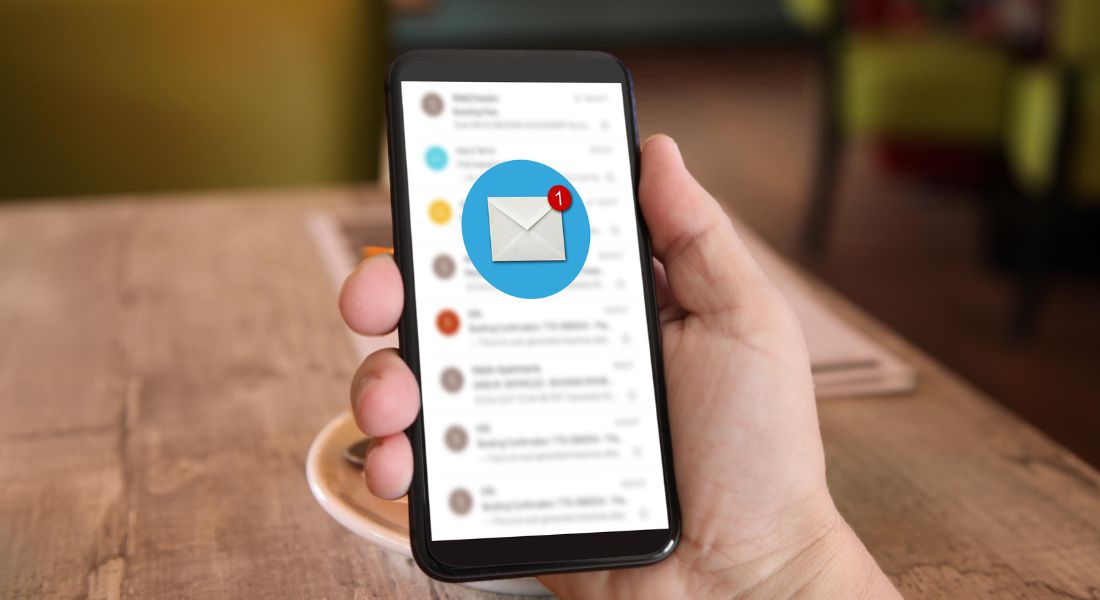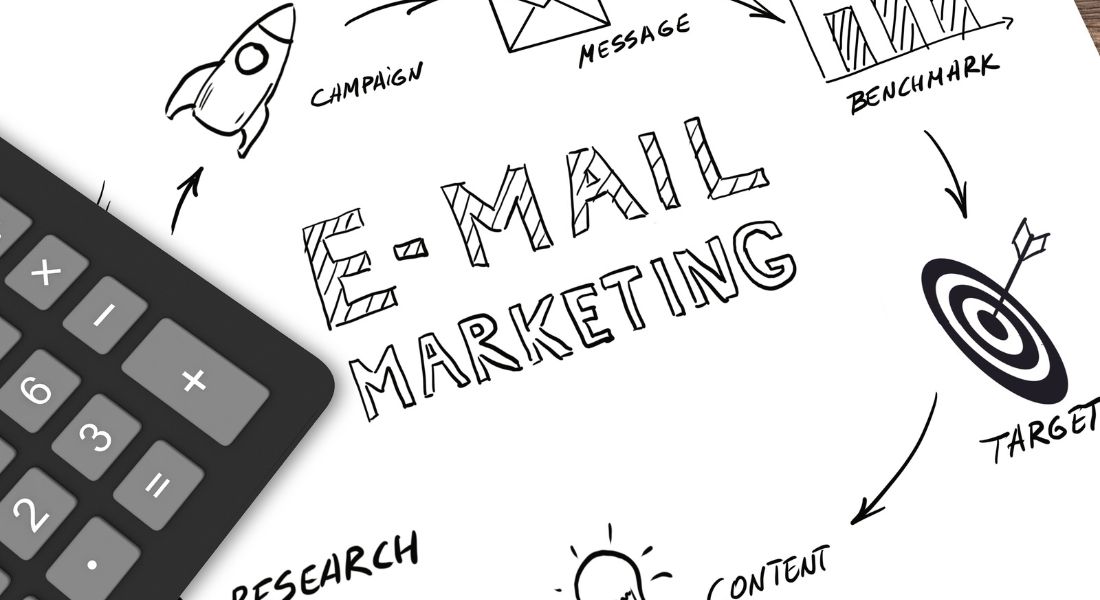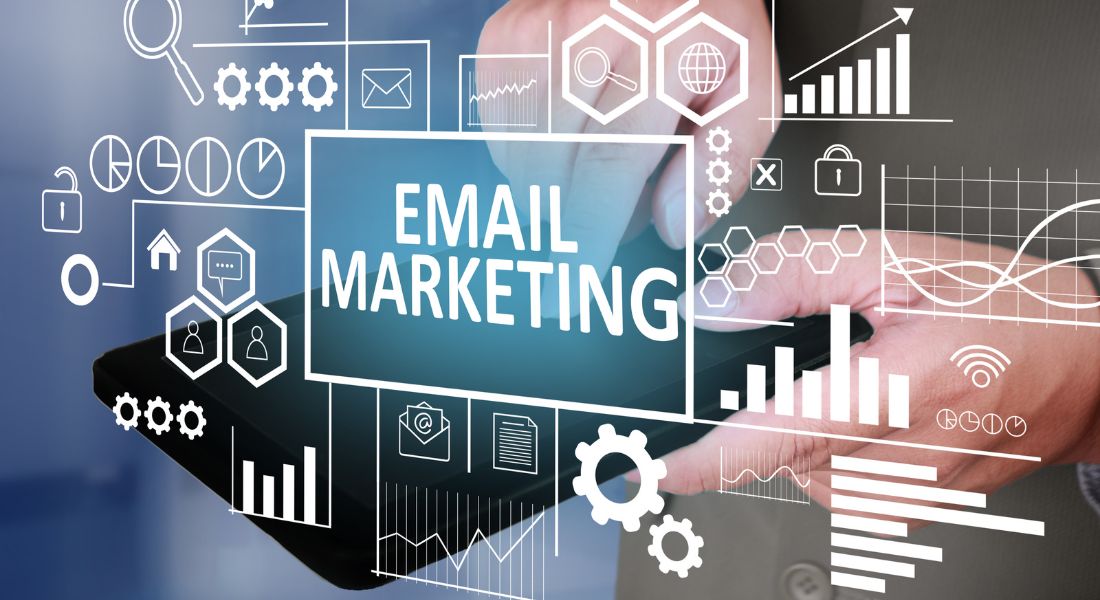In the modern digital environment, email marketing takes form as a powerful way to reach a wide audience, build customer loyalty, and drive conversions. Both businesses and individuals can utilise this method to connect with customers in compelling ways. But developing an effective email marketing strategy requires more than just crafting compelling copy and choosing an attractive template. It involves strategically selecting content to target different personas, carefully designating timing, and understanding the analytics to make adjustments as needed through various devices. Creating an email list is an integral part of this process, helping your brand to directly reach interested customers.
Email marketing may sound like a daunting task, but fear not. With these five steps, you can create an email marketing strategy that helps drive your business forward and surpass its goals. You’ll learn practical tips and the inner workings of amassing effective email lists. Read on to learn exactly how.
Quick Summary
Creating an effective email marketing strategy requires research, planning, and testing. Start by researching different techniques such as A/B testing and segmentation, then plan out the emails you will send to your email list, and finally use analytics to test the success of your strategy. This robust approach is used by successful businesses globally.
Post Contents
ToggleSetting Up Your Email Marketing Strategy
When it comes to creating an effective email marketing strategy, setting up the plan is essential. Starting from the beginning and having a good system in place truly helps with achieving success. The most successful strategies have specific steps and goals laid out from the start, including the development of a high-quality email list for your brand.
Analysing the current lifetime value of each subscriber can help determine how much money should be invested into each individual customer. The more effort that goes into creating relationships with customers over email will lead to higher returns on investment in the future. Aside from this, focus should also be set on providing quality content such as educational material, promotions, content upgrades, functions etc. Reaching out to new prospects is important but not always necessary if building strong relationships with existing customers on your email lists is a priority.
On the other hand, some email marketers might prefer to focus more on acquiring as many new subscribers as possible. This involves sending regular campaigns or promotional emails specifically designed to target new users and gain their attention. Depending on industry, interests or objectives, this approach could be beneficial for certain companies who want to reach a wider audience than they do currently. Hence, constantly growing and nurturing your email list must be an integral part of the strategy if this is the route your brand chooses to take.
No matter what approach you decide to take towards email marketing, it’s important to shift your mindset towards customer-emphasis when developing your strategy. Both methods mentioned above have pros and cons and reaching out regularly with meaningful offers provides customers with something of value without overwhelming them with too many emails at once. Moving forward, gaining an understanding of your customer profiles and goals is key in order to create successful campaigns tailored specifically to them.
Top Summary Points
Reiterating the importance of a well-planned start, when creating an effective email marketing strategy, ensure to set specific steps and goals. Analyse lifetime value of each customer and focus on providing quality content such as educational material, promotions, content upgrades, functions etc. If the goal is to acquire new subscribers, send targeted campaigns or promotional emails. When creating a strategy, shift to a customer-focused mindset by sending meaningful offers tailored specifically to the customer profiles and goals. Always remember, your email list is one of the most valuable assets for your business.Having properly set up your email marketing strategy with your dedicated team, the next step involves developing audience profiles and goals. Indeed, these are among the things that contribute significantly to the generated revenue. Without properly understanding who your target market is and what your goals are for each campaign, your messages can fall as mere text upon deaf ears. Audience profiles help you better understand the wants and needs of your global consumer base, which is especially important in our connected world, so that you can create tailor-made messages just for them.

Audience Profiles and Goals
The most important part of building any successful marketing strategy is clearly identifying and understanding who your target audience is. Creating an audience profile asks you to segment your customers according to demographic factors such as gender, age, location, professions, interests, buying behaviours and more. This represents a lot of work but it allows you to communicate with a precise group of customers in a way that is specific to their needs and wants, thereby personalising the email content. After all, when a person receives an email which is tailored specifically towards them, they’re much more likely to engage with it and convert into a customer or take action.
On top of that, it’s also critical to be sure of what you want to accomplish through each email campaign. Identifying these goals early on will assist later when it comes time to measure the success of the campaign, and can help reach your revenue targets.
As you set out defining these goals, remember to make sure that they’re SMART (Specific, Measurable, Achievable, Realistic and Timely). This will help ensure that your expectations remain realistic while meeting long-term targets in the best manner possible.
By establishing well thought out audience profiles and clearly defined SMART goals, the groundwork for success has been laid down for your email campaigns moving forward. Now all that’s left is to send out marketing emails to those identified audiences before taking the big leap into executing your plan.
Now that your team has identified the audience profiles and goals, it is time to move on to identifying your target audience. This is a crucial component of your email marketing strategy since your messages will not be successful if they are sent to an audience that is not likely to engage with them.
Identifying Your Target Audience
It is important to recognise that not every person or organisation within a certain demographic or customer segment will be interested in your product or service. You must take the time to research and gain insight into the behaviours and motivations of your target market in order for your marketing emails to be effective.
There has been much debate over whether you should focus on targeting a specific niche or broad range of audiences. Each approach has its own advantages and disadvantages, so it is important to understand which would work best for your email marketing strategy. Narrowing down your focus helps you zone in on the people who are most likely to have an interest in your message, but this may limit the potential reach of the emails. Conversely, broadening your focus can help increase the visibility of your email, but it may lead you to miss out on the most valuable customers who already have knowledge of and investment in what it is that you are selling.
Ultimately, when creating an effective email marketing strategy, it is important to identify your target audience based on their needs and interests in order for your message to hit home and provoke action. It’s these final touches that will make your campaign truly world-class. By understanding who will be receiving messages – taking into account factors such as age, gender, location, occupation, and more – you can craft a compelling call-to-action for each email campaign that draws people into engaging with your content. In the process, your marketing channels can also get a boost. Further, it enables you to efficiently design landing pages for your email campaign links, leading to a better return on investment (ROI).
Taking the time to properly identify and understand the target audience of an email marketing strategy will pay dividends in terms of higher open rates, click-throughs, conversions, customer engagement, trust building, and loyalty. Once you have identified your target audience and created a customer profile around them, you can move onto defining your goals with greater precision. With regular updates about services offered, you can continue to attract and develop contacts in your chosen demographic.
When targeting a specific audience, it is essential to define your goals so that you can measure your email marketing efforts against them. Goals are not limited to increasing the number of sales or generating more leads but should also consider engagement metrics such as CTR and open rate. Once goals have been established, you can determine which KPIs to monitor and what email marketing campaigns will work best for those particular objectives. This process could involve marketing through events or using different design strategies for various segments.
Defining Your Goals
When creating goals for an email marketing campaign, there are some considerations that need to be taken into account. Factors such as the size of the target audience, the amount of content needed, and the type of email format should all be taken into consideration when initiating a proper email marketing strategy. At the same time, companies need to ensure they have objectives that are challenging yet achievable, as this will help to measure progress and success in achieving said goals. Designing engaging landing pages could be a key consideration during this phase, leading to better ROIs.
Successful email campaigns require thoughtful planning to properly engage your target audience. It is critical to set realistic goals and plan how best to achieve them. With clear goals and KPIs in place, organisations can better track the success of their campaigns and create strategies that will continue to increase their ROI over time. This includes regular updates on services offered and staying flexible to changes as required.
Now that you have identified your target audience and defined your goals for reaching out via email, it’s time to take it one step further by creating optimal calls-to-action (CTAs) for each campaign. Understanding which CTAs are most effective in getting prospects’ attention is key for achieving the desired response outcomes from an individual campaign. For example, inviting your contacts to company events could be one such CTA, which could engage them in a unique way.
Having outlined your goals, it’s time to focus on the CTA of each campaign. Calls-to-Action (CTAs) guide your readers towards fulfilling your goal and should be well thought out. This could involve a button directing people to the intended action, such as signing up for a newsletter or clicking a link to purchase a product. It is vital to create CTAs relevant to the desired outcome and clearly explain the anticipated action.

Creating Optimal Calls-to-Action (CTAs) for Each Campaign
When creating CTAs, two key elements to consider are clarity and urgency. Clarity ensures users know precisely what to do after reaching your page, while urgency creates a sense of immediacy, encouraging people to act sooner rather than later. Effective CTAs such as “Sign Up Today” or “Order Now” can prompt immediate action. Incorporating clear CTAs in each campaign, complete with tailored landing pages for a cohesive user journey, will help target audiences reach the desired outcome faster and more efficiently.
As a user navigating the realm of email marketing, it is important to balance these elements when creating CTAs. Overly urgent language can make your audience feel overwhelmed and disinterested, steering them towards perceiving your campaigns as spam. Equally, overly vague instructions may not provide your customers enough information about the necessary steps they need to fulfil the desired outcome. Hence, finding this balance between motivating recipients with just the right amount of urgency and providing clarity serves a key purpose when crafting your email campaigns’ CTAs.
By creating optimal calls-to-action, you have armed yourself with an invaluable tool in improving your email marketing strategy’s effectiveness. The next in series is the need to carefully craft your content and offers for each one of your campaigns. This dual focus isn’t only crucial for capturing your audience’s interest and engagement but also plays a vital role in achieving your email marketing goals.
When it comes to content and offers for each campaign, it’s important to combat spam-like tendencies and keep your audience engaged with varied and valuable offers. This is particularly true for email marketing campaigns, where your purpose is not only to reach new customers but also to retain existing subscribers. With this in mind, using templates to ensure you provide content that’s of real value to each subscriber becomes a critical step.
For example, a clothing store might choose to offer exclusive discount codes for certain items and highlight featured products in their email newsletters. Conversely, a subscription-based software user might opt for educational or informative videos and case studies as well as free site trials or downloadable guides.
Content and Offers for Each Campaign
Choosing the correct type of content and offer in each campaign can indeed be a challenge. It’s best to start by figuring out what type of information your subscribers would find valuable. If there is a series of past campaigns you’ve done that have been successful, examine what type of content it featured and aim to replicate that success in your future marketing efforts.
Regardless of the type of content or offer you decide on, it should always align to the specific goals of each campaign. By taking time to discern which content and offers are most likely to engage your subscribers, you can ensure each email marketing campaign progresses towards achieving its goals.
Now, the next step in crafting an effective email marketing strategy is retargeting and subscriber segmentation – two key elements that should never be overlooked for the purpose of avoiding spam-like perception. When utilised correctly, they can considerably boost open rates, engagement, and conversions while also aiding you in personalising every campaign according to individual preferences.
Once you have designed effective content and offers for each email marketing campaign using your chosen templates, the next phase of your series in creating an effective strategy should be focusing on retargeting and subscriber segmentation.
Next up in creating an effective email marketing strategy is retargeting and subscriber segmentation – two key elements which should never be overlooked. When utilised correctly they can significantly boost open rates, engagement, and conversions while also helping you personalise every campaign according to individual preferences.
- According to Campaign Monitor, 75% of people prefer to receive promotional content via email than other channels.
- According to OptinMonster, personalised emails improve open rates by up to 18%.
- According to GetResponse, including images and videos in emails can increase click-through rates by up to 300%.
Retargeting and Subscriber Segmentation
Once you have designed effective content and offers for each email marketing campaign, the next step in creating an effective strategy is to focus on retargeting and subscriber segmentation. Retargeting helps brands reach potential customers who have previously visited their website, increasing the likelihood of conversion by 34%. This is achieved through placing a tracking code across the web pages that customers visit on your website. When they leave, your ad will follow them around the web as a reminder to return to your website and convert. Segmentation is also important for delivering relevant emails to the right people at the right time. By researching customer profiles and segmenting them based on geography, demographic data, interests, etc., you can craft targeted messages tailored to different types of customers.
For both strategies to be successful, it is important that marketers recognise the need to use multiple channels in addition to emails when targeting customers. Combining emails with other forms of communication such as social media posts or SMS messages can be even more effective in driving conversions than relying solely on emails. Furthermore, leveraging other channels can help drive further engagement when integrated with email campaigns. By keeping customers constantly engaged through multiple platforms, markets have a better chance of seeing more success with their campaigns.
Overall, retargeting and subscriber segmentation are key components of any successful email marketing strategy. These strategies combine powerful insights from analytics and customer data along with various channels for targeting customers including ads and social media postings. By using these strategies effectively and combining them with effective content, markets can increase their chances of successful conversions.

Common Questions Answered
What factors should be considered when developing an email marketing strategy?
When crafting an effective email marketing strategy, there are a few key considerations to keep in mind. First, it is important to determine who your target audience is and what type of content will resonate with them. You should also consider the frequency of emails, the structure of the emails, and any other incentives (e.g., discounts) you can offer to your subscribers. Additionally, make sure to test different subject lines, calls-to-action, and messaging to ensure the best open rates and engagement. To maximise conversions, employing various email automation tactics can be extremely helpful for optimising results over time. Lastly, don’t forget about personalization—including the ability to segment your audience into different categories—in order to tailor messages according to the desired recipient.
What are the best practices for creating and sending effective emails?
The best practises for creating and sending effective emails are as follows:
- Make sure you have segmented your mailing list into targeted groups that will be most interested in the content you’re sending. That way, you’re more likely to reach customers who genuinely want to hear from you.
- Keep subject lines concise, compelling, and informative so that they entice readers to open your email. Tailor the subject line to each customer for even better results.
- Craft an email body that’s attractive, clear, and engaging. Make sure to include a strong call-to-action so your readers know what action they should take next after reading it.
- Send out emails at times when customers are most likely to engage with them — generally weekday mornings, when people are most likely to check their inboxes first thing after arriving at work.
- Track engagement metrics like open rates and click-throughs so that you can understand how well your campaigns are performing and adjust accordingly.
How can I measure the success of my email marketing campaigns?
Measuring the success of your email marketing campaigns is key to understanding how they are performing and what areas you can tweak to make them more effective. To do so, it’s important to track key metrics such as open rate, click-through rate (CTR), number of unsubscribes, and call-to-action (CTA) conversion rate.
Open rate measures how many people actually open your emails. A high open rate indicates that your subject line was effective in capturing attention, but a low open rate suggests that you may need to rework your subject lines going forward.
Click-through rate (CTR) measures how many people who opened the email clicked on links within the message. A high CTR shows engagement with the content and is usually a good sign that your emails have resonated with your target audience. A low CTR can indicate that your calls to action need improvement or that the copy in the email isn’t compelling enough for readers to take action.
Number of unsubscribes also help measure success by showing which campaigns led to repeat purchases or continuing engagement from subscribers who remain interested in the content you’re sending out. The fewer unsubscribes you have, the better – this is an indication that customers are satisfied with your campaigns and are likely returning customers.
Finally, call-to-action (CTA) conversion rate helps measure how successful different CTAs were in encouraging people to take action after opening your email. If you have several CTAs in one message, tracking CTR data for each CTA will help you understand which CTAs worked best and should be used more often in future campaigns.
Overall, by keeping track of these key metrics, you will be able to get a clear view of which campaigns worked best and meet your goals more efficiently. This will help you refine future campaigns accordingly and ensure maximum impact from all of your email marketing efforts.






